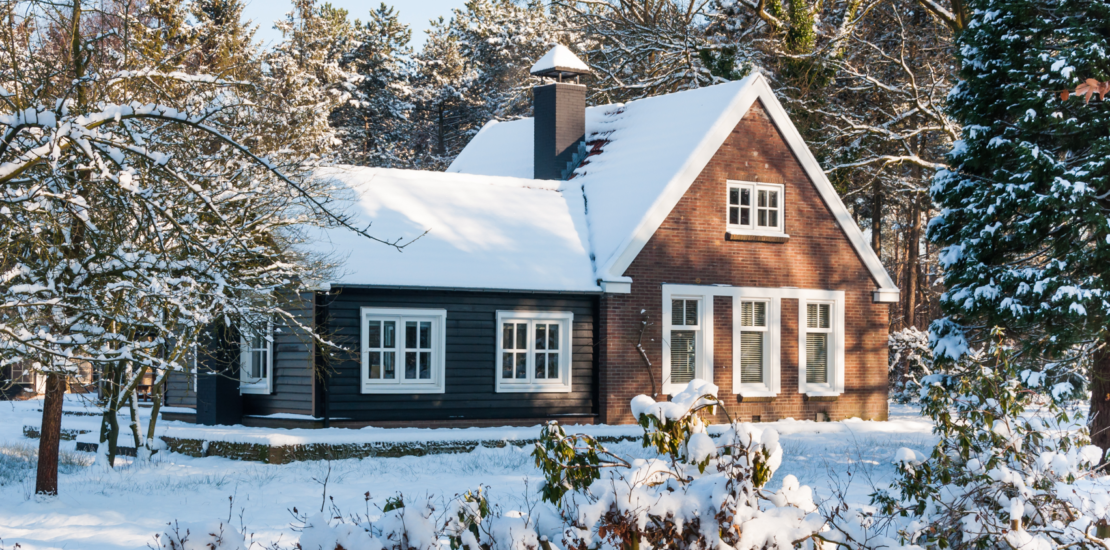Winterize Your Home to Avoid Insurance Claims
- November 12, 2021
- Posted by: Guerrilla Group
- Categories: Home, Insurance

Winter is right around the corner and it is extremely important that you take the steps to prepare your home to withstand the conditions the season could bring. Performing preventative maintenance in the fall season will assist in protecting your home and help you avoid filing preventable insurance claims.
To help you with this we put together a list of easy maintenance tips and best practices to help you prepare the outside and inside of your home for the winter months:
OUTDOOR WINTERIZING:
Preform a visual inspection on the outside of your home.
- Check your roofline for leaks and cracks make sure all shingles are secured
- Check the seal around the chimney
- Ensure skylights are able to tolerate heavy snow and there are no leaks in the seals.
- Check siding to ensure there are no loose areas that could be blown off in intense wind.
- If you have a crawl space, make sure your vents are closed to prevent frigid air to penetrate the house.
- Trim tree limbs that are hanging over your home to protect against falling. The general rule is to keep the limbs at least 3 feet away from your home to eliminate excess water from seeping into your home through the roof or siding.
- Contact a professional if the limbs are hanging over power lines.
- Store and secure your grill, outdoor furniture and garden decorations to prevent damage from weathering.
- Ensure they do not blow around and cause damage to your house.
- Cover affixed items such as air conditioners to keep them protected from the elements.
- Clean out your eaves troughs and downspouts and ensure they are properly secured.
- Ensure there are no clogs or debris allowing water to drain properly. This will prevent water from penetrating the foundation of your home—protecting your basement from flooding. Wet leaves remaining in the gutters over winter add significant weight and volume when they freeze, increasing the risk of damage.
- Close the pool, turn off the sprinkler system and drain outside faucets and pipes.
- Refer to your pools manufacture or installer for proper winterizing protocol—the procedures necessary to protect your pool or spa in the winter will differ depending on your set up. It is always beneficial to hire a professional to preform these activities as a simple mistake could cost you significantly.
INDOOR WINTERIZING:
- Prior to firing up your fireplace it is highly suggested to get your chimney maintenanced and cleaned by a professional.
- A full inspection would include ensuring the flue damper opens, closes, and seals properly, there are no combustible materials, such as animal nests, or other foreign objects in the flue. The fireplace surround, hearth, and firebox have no cracked bricks or missing mortar. There are no tree limbs above or near the chimney.
- Before you start using your heat regularly you should preform an inspection on your furnace or boiler system.
- Change necessary filters to allow for the system to operate properly.
- To avoid your pipes freezing, keep your thermostat set no lower than 55 degrees and during extreme cold fronts allow warm water to trickle from faucets overnight.
- Clean the space behind your clothes dryer and the dryer vent to remove lint or dust that may have accumulated inside.
- The cold, dry weather in the fall and winter can causes static electricity, creating a risk of sparking a fire.
- Check your smoke/fire detectors and carbon monoxide alarms, swap in fresh batteries at least once a year. A “chirping” sound means that it’s time to change batteries. Because alarm sensors wear out, replace each alarm at least every 10 years.
- According to the U.S. Fire Administration, heating is the cause of 27 percent of structure fires during the winter months. Its best practice to be checking the batteries in these once a month.
- Verify your windows are properly sealed.
- You can easily accomplish this by feeling around the edges of the windows or the hinges.
- If you can feel moving air, you can adhere plastic to block the air from entering the home. Additionally, you can utilize rope caulk to seal the leaks.
- You can easily accomplish this by feeling around the edges of the windows or the hinges.
- Test your sump pump to make sure it’s working properly.
- You can test your pump by slowly pouring several gallons of water into the sump pit to see whether the pump turns on or not. This process should be completed every few months—especially after a long dry season or before extended periods of rain.
While winterizing your home might not be the most appealing activities—it is important to complete. Continued preventative maintenance will make these tasks easier to complete as each season passes, making your home safer and will save you money on unnecessary insurance claims.
To learn more ways you can prepare for the winter weather, view our checklist.

